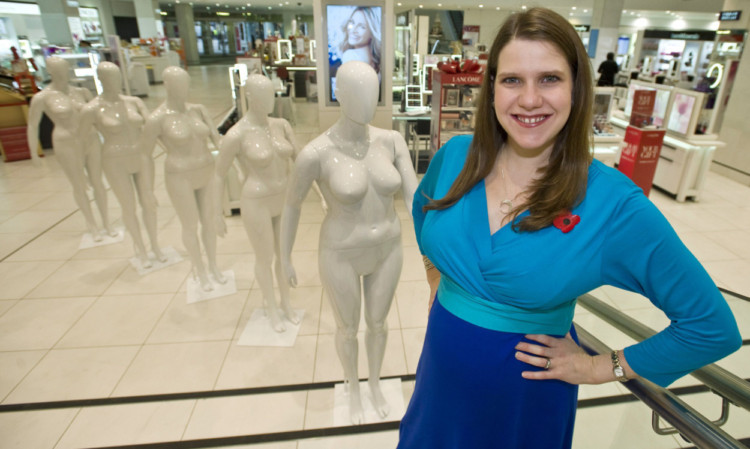In the week that Debenhams becomes the first mainstream store to use size 16 mannequins, Helen Brown wonders if size matters?
It’s big news. And we may well be hearing and seeing more of it. Three years ago Debenhams Oxford Street pioneered a trial using size 16 mannequins in its window and fashion department displays, arguing that stick-insect models and tiny sizes as standard were causing its female customers no end of angst in the changing rooms and beyond. And presumably, leading to shrinking sales, if not sizes.
This week the fuller-figured versions won a permanent place in the public eye when the company installed them alongside the usual size 10 dummies on all its women’s fashion floors in the flagship London store. And this initiative is soon to be rolled out (to coin a phrase) nationwide.
The Debenhams in Dundee is apparently one of the first branches to pick up on this new trend, which either means we are at the forefront of the thrusting fashion industry (tak’ tent, City of Culture wallahs) or some keen retail researcher has been alerted to the existence (and effect) of the Dundee peh.
So does size matter? It surely do. There has been much talk over recent years about the effect on teenage girls, in particular, of a permanent diet of skinny role models in magazines and the media in general but little, so far, has been done to change that materially. Plus-size models, however beautiful, fit and healthy, are still rarely seen on the covers of glossy magazines or in major TV or cinema advertising campaigns. Designer sample sizes are still very much on the lower side of single figures think the supposedly desirable size zero rather than anything a normal woman of today could fit into without the aid of a bent coat hanger or a block and tackle.
The truth is, of course, that British women are, on average, a size 16 and have been for some time Debenhams already stocks up to size 26 in its women’s wear departments and 42% of the company’s clothing sales come from size 14s and 16s. So in some respects, Debenhams’ public face is just catching up with real life in society and its own stores and the reality, perhaps, of reduced spending capacity as well as larger embonpoint. People are more careful about what they buy and are less prepared to be fobbed off with ill-fitting, unsuitable apparel.
MP Jo Swinson, campaigner for body confidence in women, reckons that a drive like this is a good way to challenge the notion that there is only one way to be beautiful in our looks-obsessed culture. Debenhams director Ed Watson commented: “Having worked on this project for three years, we hope it will help people in some small way to feel comfortable about their bodies.”
They’re both right, I suppose, but I think it may well be less about feeling comfortable about their bodies than feeling comfortable in their clothes.
Ask any woman what her biggest problem is in buying clothes and chances are she will tell you it’s little to do with colour, style or even price it’s sizing and getting garments that actually fit. At the moment, I am a walking (or sitting) example of this. I’m supposedly a fairly standard size 14. As I write this, I am wearing size 12 jeans, a size 14 top and cardigan. On the coat rack hangs my size 16 mac. I tried on a rather fetching Levi shirt in John Lewis the other day that was designated LARGE and I literally couldn’t make ends meet. The last jacket I bought is blush-makingly labelled XL but at least I can get it on.
Trying on clothes is a nightmare because even if you end up in the fitting room with the size you have carefully measured yourself up to be, the chances of it fitting you are as remote as the possibility of reduced energy bills. To add to the complications, different shops seem to have different-size charts. A Marks & Spencer 12 is not the same as a Wallis 12. A designer 12 (and they don’t go a lot higher than that) is nowhere near a chain store 12. And that’s only when you get to double figures. Don’t get me started on size 8s, the only garments, as far as I can see, that are ever left on the rail at the end of the sales. If that doesn’t tell you what you need to know about sizing policy and knowing your market, I don’t know what does.
Petite people, of course, would argue that they have similar problems in getting clothes to fit, so nobody in this tangled equation seems to be a completely satisfied customer. At least this move is a visible recognition that we don’t all fit into the same pigeonholes or frocks.
And speaking of mannequins, will this move affect the male of the species at all? Instead of snake-hipped, six-foot, six-packed youths adorning the gents’ outfitting sections, will there now be a swing to displays of the chunkier chap or the larger lad? It will be interesting to see if the guys, as well as other national retailers, follow suit.
